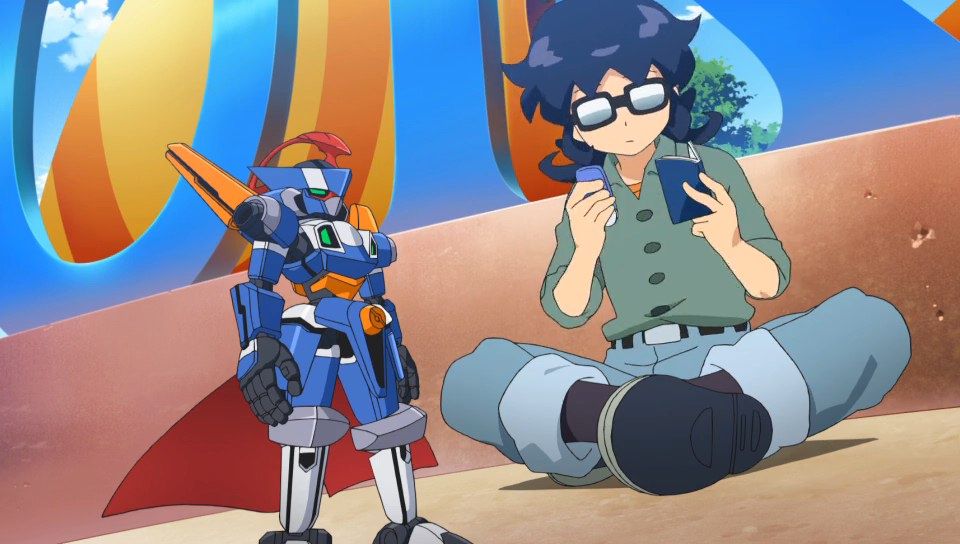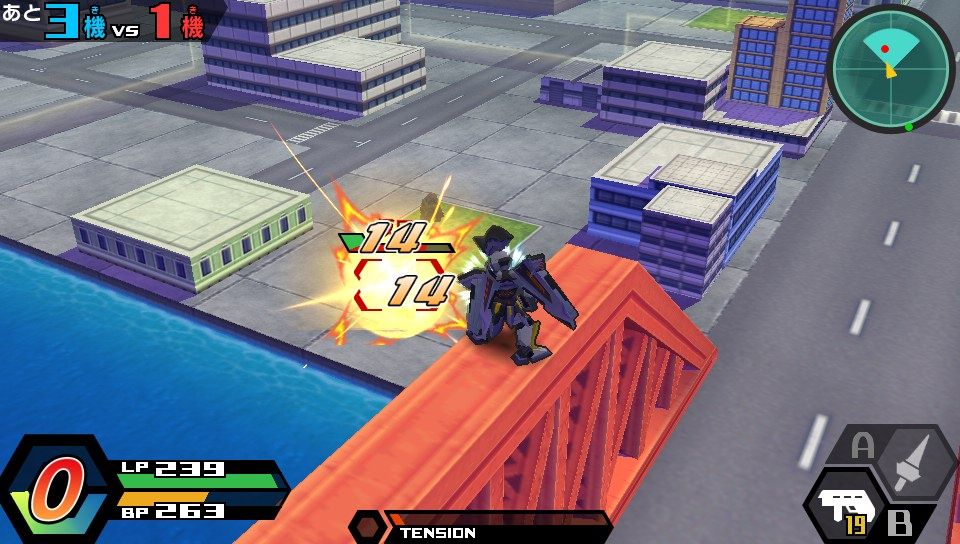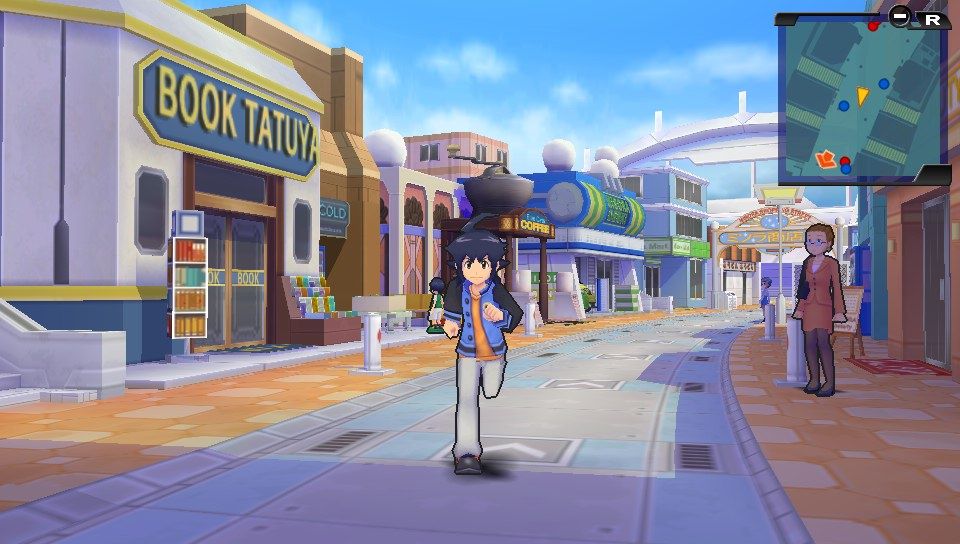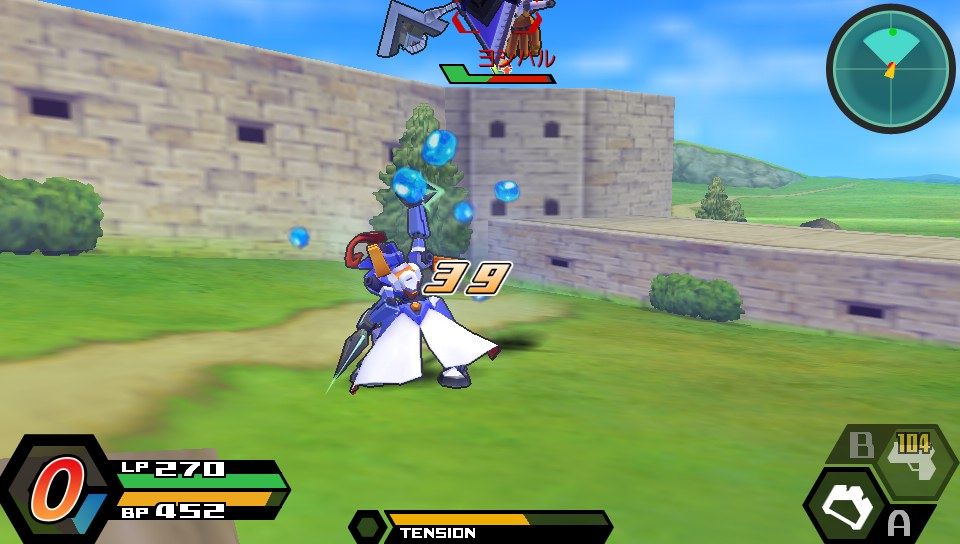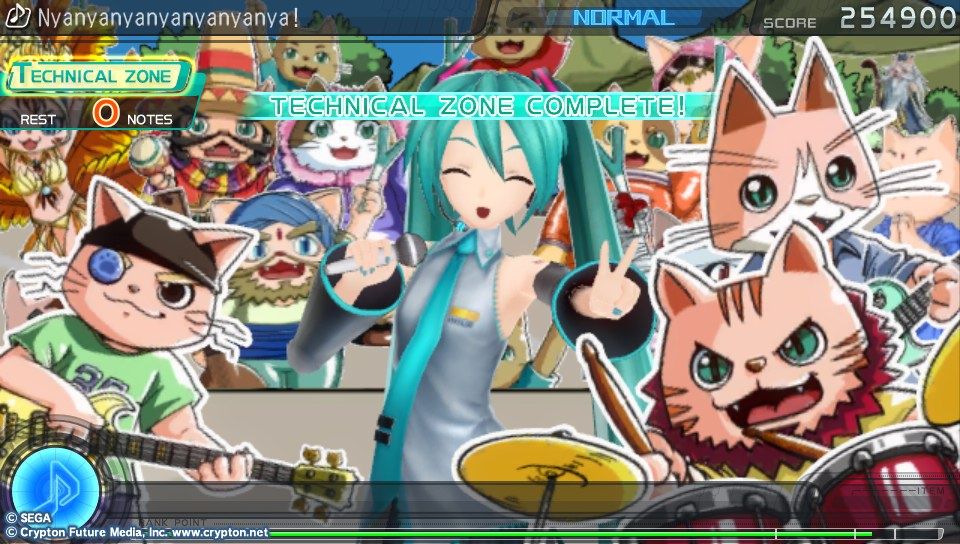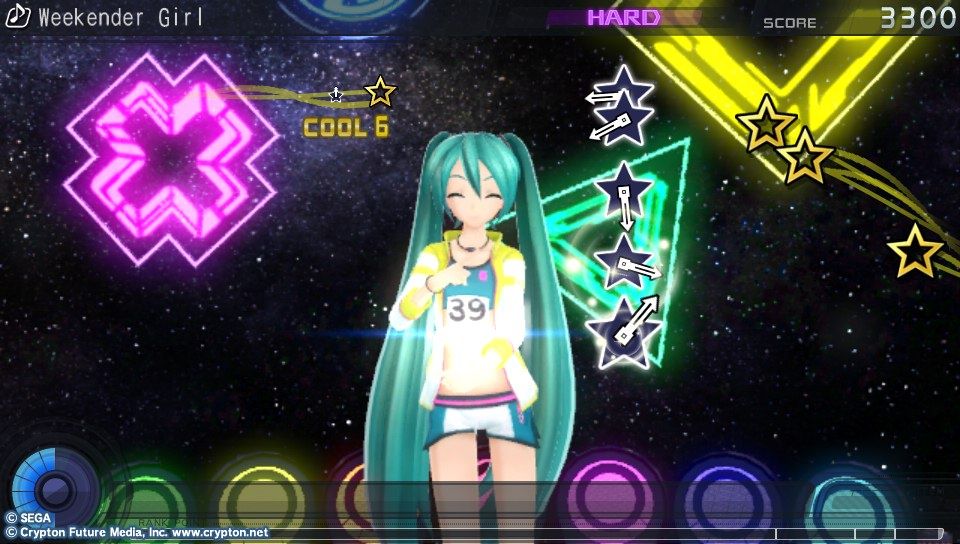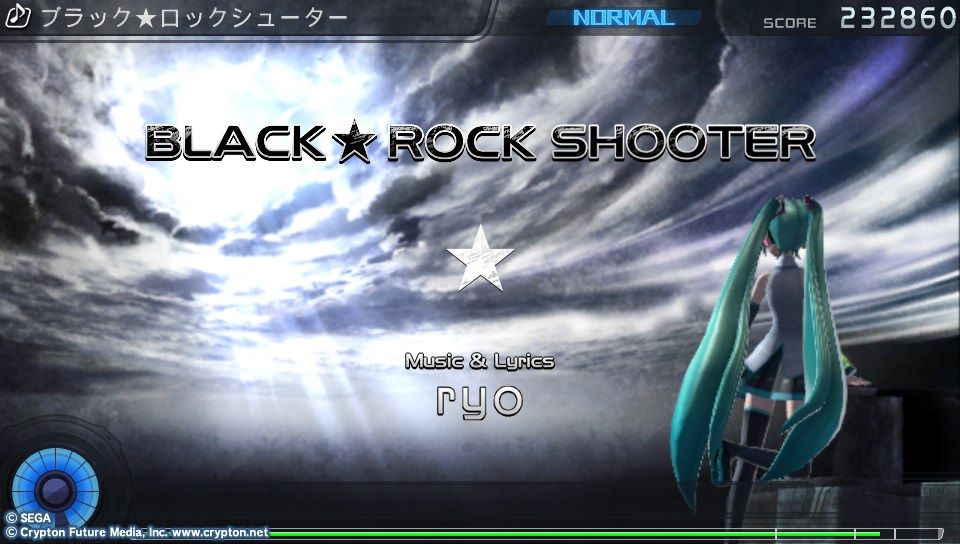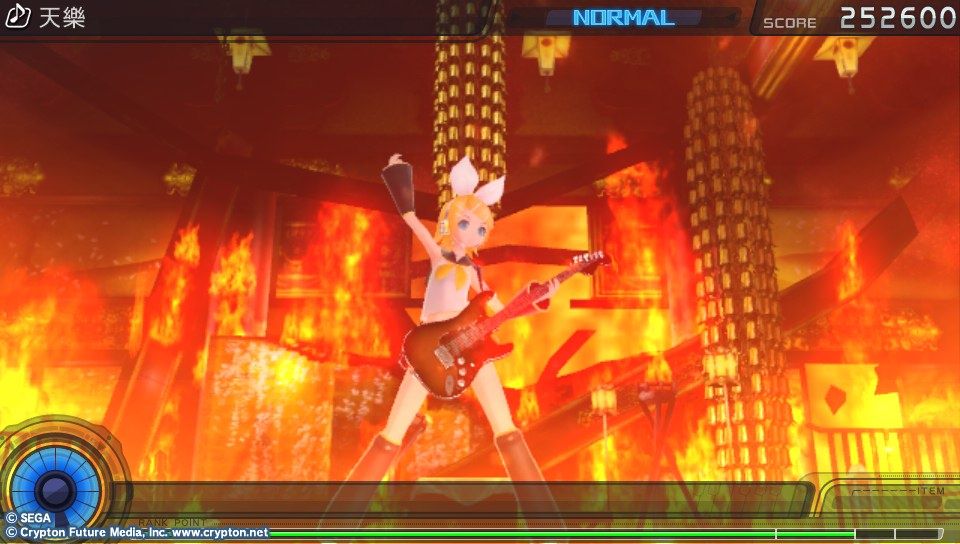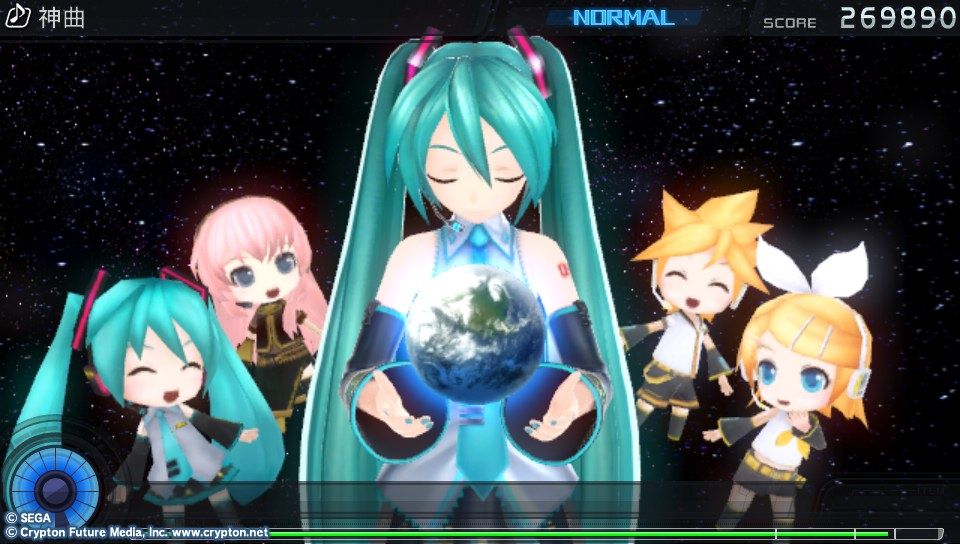New protagonist Hiro starts out blind to the real world of LBXs, but quickly comes to dominate.
The Little Battlers W (LBW) is the third entry in the Eastern-only series The Little Battlers from developer Level-5, this time appearing both on the PSP and PS Vita. To jump the gun and gush real quick; It's awesome!
To summarize The Little Battlers games is that they're a mix of RPG and Action games. You explore the world as one young protagonist or another, chatting with NPCs and managing stats, but mostly you're getting into battles with others using your miniature robots titled LBX's to show who's boss. Battles take place in small, varying area maps that range from cities/stadiums/highlands/etc: and within them you'll fly and blast your way to victory by smashing someone's expensive toy to smithereens. It's an instantaneously addictive series, and the depth of charm and compassion within each of these titles will lure you right into the clutches of fanboyism. From the crisp, entertaining character art in dialogue to the forceful plunge of a dash move, The Little Battlers is a series that anyone of any age can appreciate for its sheer authenticity and faith within itself.
Battle Backgrounds are bland, but in-game LBX's are delightful (despite this blurry screenshot)
LBW is definitely a wild leap to the Vita; the anime cut scenes are simply stunning, each color and shade exploding from the screen and utilizing the OLED to its full advantage, and the world areas, from the short entryway to the imposing mall or the narrow, busy avenue of Shoten all wield a new depth from the Vita's visual intensity. The in-battle LBX's are crisp and sharp also, cute and riddled with "kawaii" movements but intimidatingly impressive none-the-less. Unfortunately though, the same can not be said for the battle backgrounds; they're bland, appearing as they would on the PSP version rather than the Vita, with stages from the previous entries looking like they were ripped directly from them and placed here completely untouched. Fortunately though, LBW stands out for its game play in regards to battle and battle arenas, and while mostly unchanged, still shines brilliantly.
Who knew what khakis and a jock vest could do for a young man?
Battling is mostly a brief affair, whether you're battling other LBX owners or getting into fights with renegade LBXs (who are seen in-game; no random battles). Damage is high and ranged attacks, while formidable, are used mostly to build your Function ability, a special attack (multiple per weapon) that deals damage that a normal sized robot would (a lot!). For the most part though you'll be charging in, hopping over bite-sized buildings and scaling canyon sides, then slashing into each other with hopes your combo hits first. Attacks are handled solely from the Square button, but various combos can be performed by moving the left stick in varying positions during your onslaught. Again, each weapon, be them knives/dual-swords/hammers/lances/etc: hold their own slew of combinations and animations, but in LBW there seems to be a larger assortment of combo attacks possible, with launching enemies into the air and pummeling them down an impressive attack time and time again. While most fights won't push beyond a minute long, each are filled with a deep sense of reward and enjoyment, and so level grinding, whether it is your character, his/her LBX, it's subsequent parts, or individual weapons, is never once a chore.
So far, the game has been mostly linear so I haven't much to say about the scope of the world or how much else there is besides the standard LBX store and NPC interaction. Still, as stated above, the world itself is extremely impressive, particularly in scope, and it's been a delight just wandering the stretch of Shoten or punching my way through the wreckage of the mall. I can only assume that the levels, both RPG and Combat builds, will increasingly grow in both charisma and awe.
Battle combos are a delight, as the slightest movement of the Left Stick opens totally new possibilities
The Language Barrier
*Firstly, The Little Battlers games, and all Level-5 games, support Furigana script. If you're a beginning Japanese student who wants to take on the challenge of understanding their first Japanese game or are just interested in building your vocabulary, these games are a terrific way of doing so.*
Without knowing a pinch of Japanese, The Little Battlers W is a pretty easy game to get into. Plot Progression is always known because of a pointer on the mini-map or a blatant pulse surrounding an area on the main map, and battles are handled with an almost casual simplicity of controls; there's nothing that requires you to look up a guide online to know how to do, and so after taking a spin with each button you'll have acquired the overall knowledge of how to pilot your LBX. The various faculties of battle, such as those seen in the above image (LP/BP, Tension, C) are also understood borderline instantly once you take to battling (tension is how much more you may boost/attack before being required to wait for a recharge/LP is HP, and BP is remaining Battle/Battery Points and allows you to perform Function attacks/C is just the amount of stored C points you have to perform whichever equipped Function attacks). And moving around town and chatting/battling with NPCs is also blatant and strangely enjoyable also even if you don't know the language.
That said, LBW is really about customizing your LBX, and this poses a certain degree of issue. For the most part, choosing which weapons/armor to equip can be decided by their rank and Atk/Def stats (it's written Atk and Def also, so you'll know), but there are also a slew of variable in managing your LBX, whether it is using same-set parts or understanding which stats and elements your armor/weapon supports and is weak against. This can be overcome with trial and error, as so long as you're playing the game without month-long breaks you'll acquire the knowledge/memorization of which color shade means what, except LBW poses a new issue in the form of modifying chips handled similarly to the Inventory Screens of Resident Evil games; six different chips to allow mega modifications of your LBX, from LP/BP gauge through to elemental purity, and this is a pretty aggravatingly Language-Barrier segment as messing with chips can really make or break your LBX, especially when going into elemental-heavy areas.
Still, I would say LBW is only slightly less friendly than the previous entries for the series, and that it is is no way near an "impossible" import for just about anybody who has the slightest patience. Sincerely, I haven't used my dictionary for anything other than the dialogue thus far, and I'm not doubting in the slightest how I've modded my LBX; he's bad-ass, and I know it. And that's just it; you'll know it too. Trial and error, if only for a few minutes, and then continue the game and enjoy it, which you certainly will.
